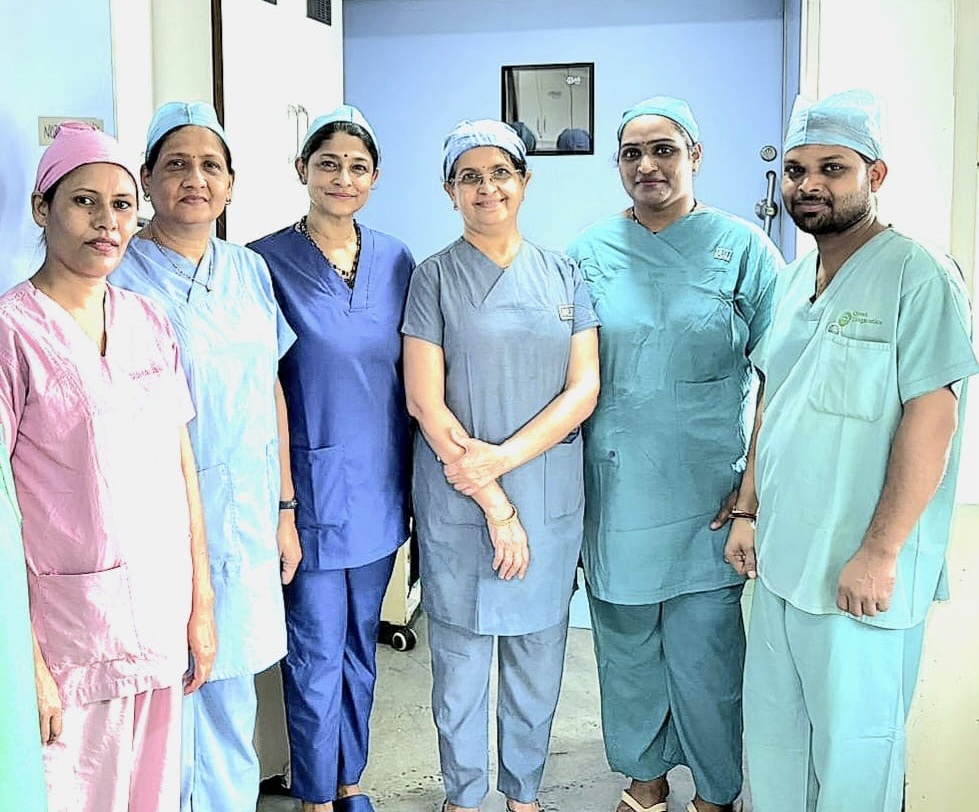A hernia occurs when an internal organ or other body part protrudes through the wall of muscle or tissue that normally contains it. Most hernias occur from within the abdominal cavity, between the chest and the hips. There are several types of hernias like inguinal hernia, inguinal (femoral) hernia, umbilical hernias and incisional hernia.
A 48 year old lady came to the emergency department with complaints of severe abdominal pain, distension, episodes of constipation, with previous history of surgery for incisional hernia in a midline hysterectomy scar. She was admitted under care of Dr. Prachi Mahajan, Senior Consultant in Minimal invasive Surgery. As per European Hernia Society Classification, it was M4W3, a large defect of 7 cm with small multiple defects.
Incisional hernias result from a weakening of the abdominal muscle due to a surgical incision. It presents as a bulge or protrusion at or near the area of a surgical incision. An incisional hernia can occur for a number of specific reasons; like excessive or premature physical activity after surgery, considerable weight gain, pregnancy or increase abdominal pressure. Hernias are most likely to occur within three to six months post-surgery but can happen at any time.
After stabilization of her general condition and resolution of the acute phase, the patient was taken up for surgical repair. Dr. Anita Pande – Anesthetist, Dr. Devayani Buche – Physician and 24×7 Intensivist cover supported the patient through the process.
Dr. Prachi Mahajan who performed the intricate complicated surgery informed that the hernial sac consisted of thickened intenstinal loops with dense adhesions. So adhesiolysis was done, contents were reduced and a plane was developed extensively on both sides behind the main vertical muscles of the abdominal wall.
A unilateral TAR (Tranversus Abdominal Release) procedure on the left facilitated tension -free closure of the peritoneum and PRS complex with placement of a large polypropylene mesh in diamond configuration. On follow-up, this patient is happy and pursuing all her normal activities. Various techniques of Abdominal Wall Reconstruction (AWR) are now being developed and practised to ensure good repair of large complex hernias. Some patients with loss of domain (reduced space within the abdominal cavity) require additional preparatory procedures.
Dr. Prachi further added that many new techniques in abdominal wall reconstruction have been developed in the past 5 years. They may be performed laparoscopically or by open or by a combined (hybrid) technique, depending upon various factors. A strong and long-lasting repair as well as good cosmetics is the goal of hernia surgery.
Dr. Usha Nair, Managing Director highlighted that Orange City Hospital is known for its round the clock comprehensive emergency, Critical Care, Trauma, Burns with Rehabilitation facilities available under one roof for the past 27 years.
👉 Click here to read the latest Gujarat news on TheLiveAhmedabad.com




